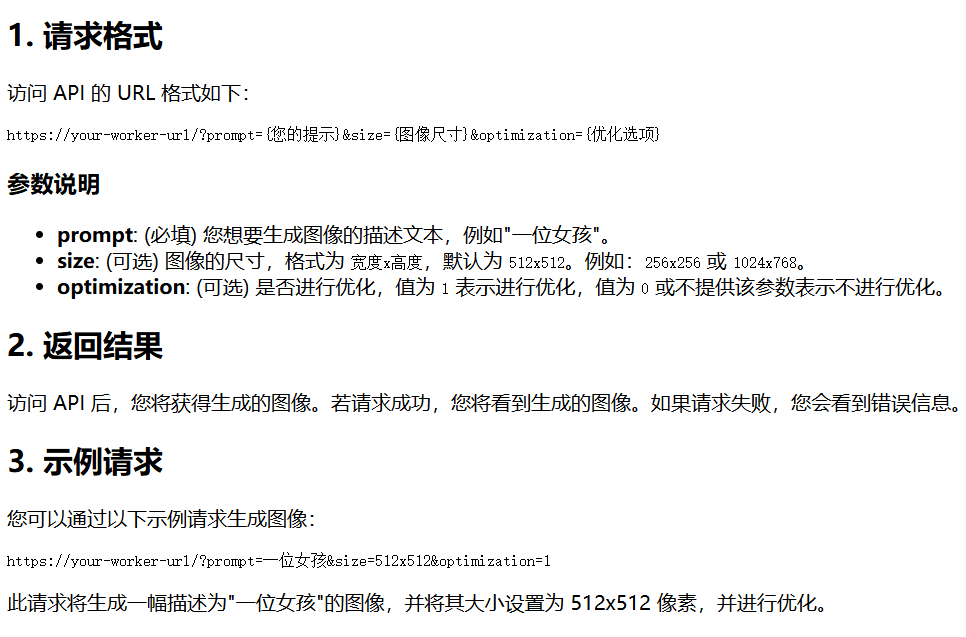That is, Dream AI released the real can write Chinese in the picture of the Wensheng map model, with the use of tutorials.
It's been a long time since I've experienced Dream AI, but this time I found that it has changed a lot. The most surprising thing is to find a "Picture 2.1" model, which states "Stable structure and strong film texture support the generation of Chinese and English fonts."
I do not know whether it is the model's native ability to generate Chinese, or in the later stages of image generation, the use of "templating" way after the insertion of Chinese, we have shared a similar principle of open source projects.
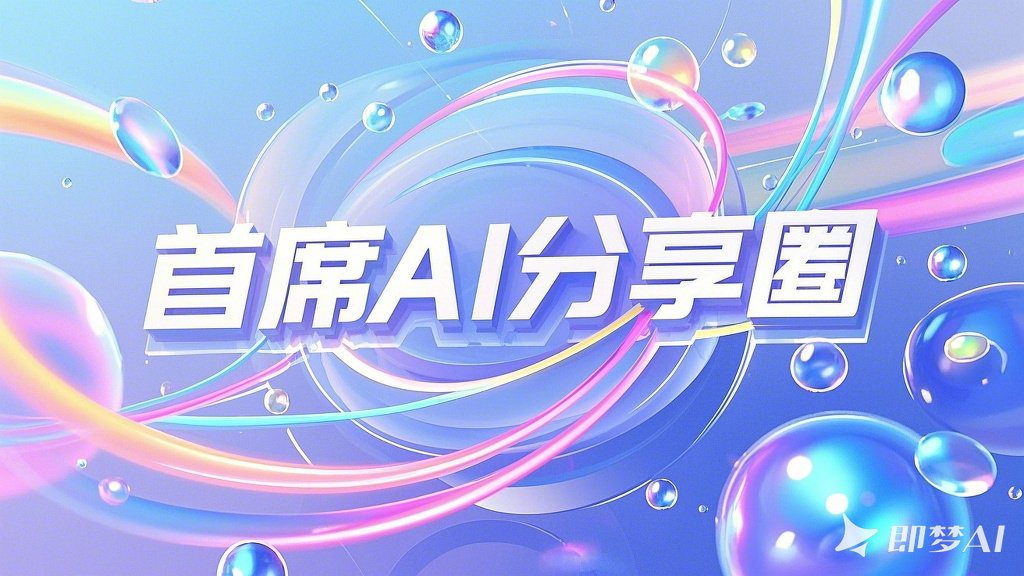
Phase 1 Trial: Create a perfect poster with Chinese language
Let's take a quick look at the input: a gradient background, interspersed with colored lines and bubbles in the lines. Metallic font play with "Chief AI Sharing Circle"."

The first impression is that the model is native, why? Because he has a chance of generating two letters "I", which shouldn't be the case if it's templated and spliced in later.
Let's continue the test, this time constructing a more complex cue word to create a movie poster: the main image is of a white wolf standing on top of a snow-covered mountain at night, looking up at the moon howling in the distance. The moonlight is reflected in the dark mountain peaks, revealing a white light. At the top, it says "2024 Year-End Presentation" and at the bottom, it says "Lone Wolf Movie in Theaters".

The effect is somewhat blown up! But what's up with some non-text characters on the image? Optimize the cue words a bit to try to remove them.
Tried adjusting the "fineness", asking for a clean screen, allowing only XXX writing, solid color backgrounds, and other tricks... Still can't remove non-text characters

This is not quite a "cinematic" poster, so let's continue to optimize it and add some embellishments: photographic grade, 4K blockbuster, pristine background, and the main image is of a white wolf standing on top of a snowy mountain at night, looking up at the moon and howling in the distance. The moonlight is reflected on the dark mountain peaks revealing a ray of white light. Tiny snowflakes falling, strong contrast of light and shadow, focusing on the white wolf, the white wolf's eyes emitting a faint red light, the white wolf's thick white fur, interspersed with gray hair, the top of the picture with gray metallic texture writing text "2024 End of the Year Presentation", and at the bottom of the picture with a bloody ribbon as the background text "Lone Wolf Movie Release". Lone Wolf Movie in Theaters"

There are some non-text characters, the last step goes to the canvas for editing, choosing to eliminate, or add or subtract some elements to end up with the perfect poster:

The second phase of the trial: does not give the Chinese prompt word can generate Chinese
The first phase of the task is completed and we use the cue word in thestrong text alertGenerate text in a picture and try out the model's true comprehension skills next.
Without describing any text, give a hint of a picture that may have Chinese elements:
First deck: Chinese New Year's cards
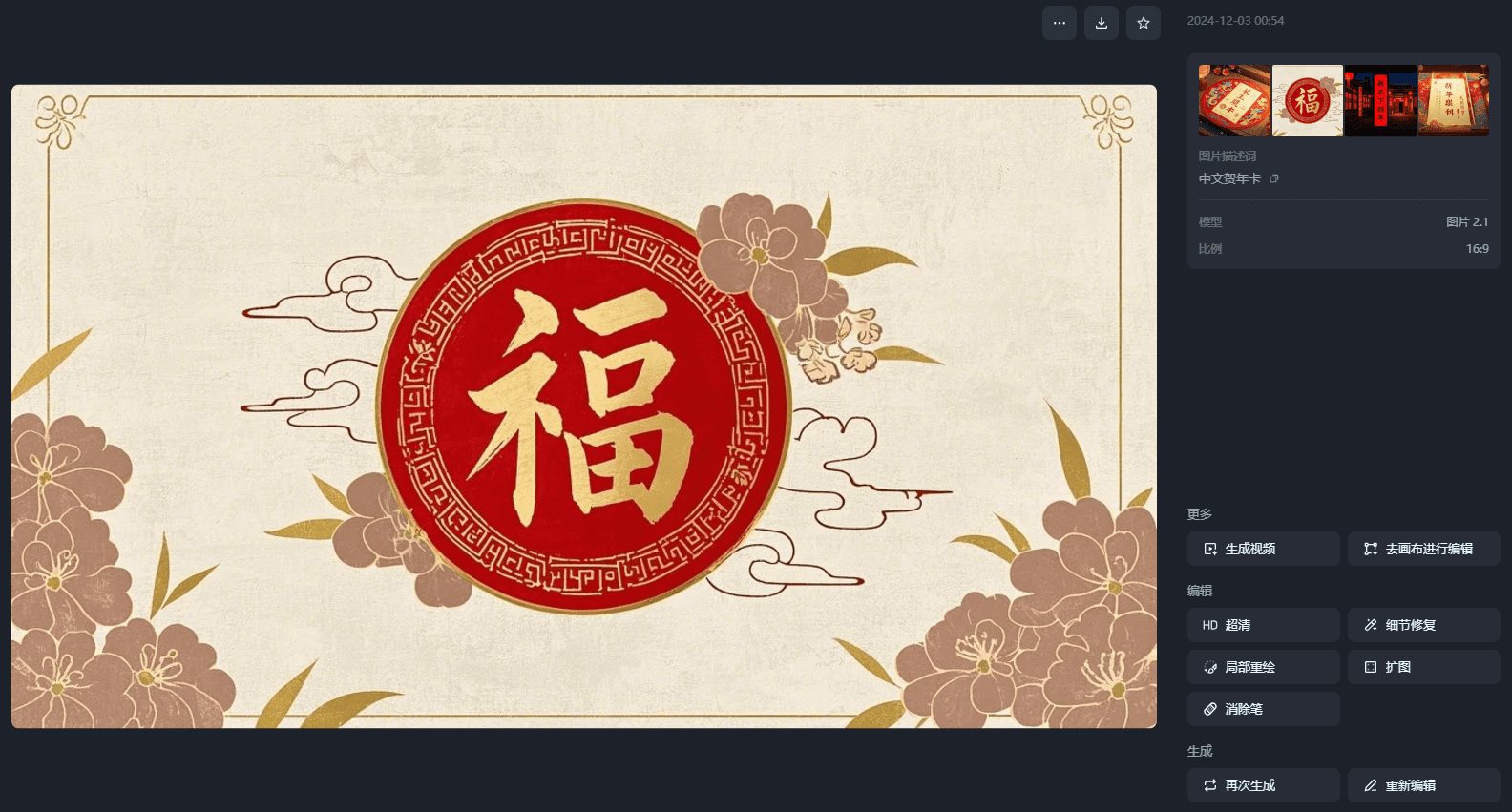
Second: Couplets
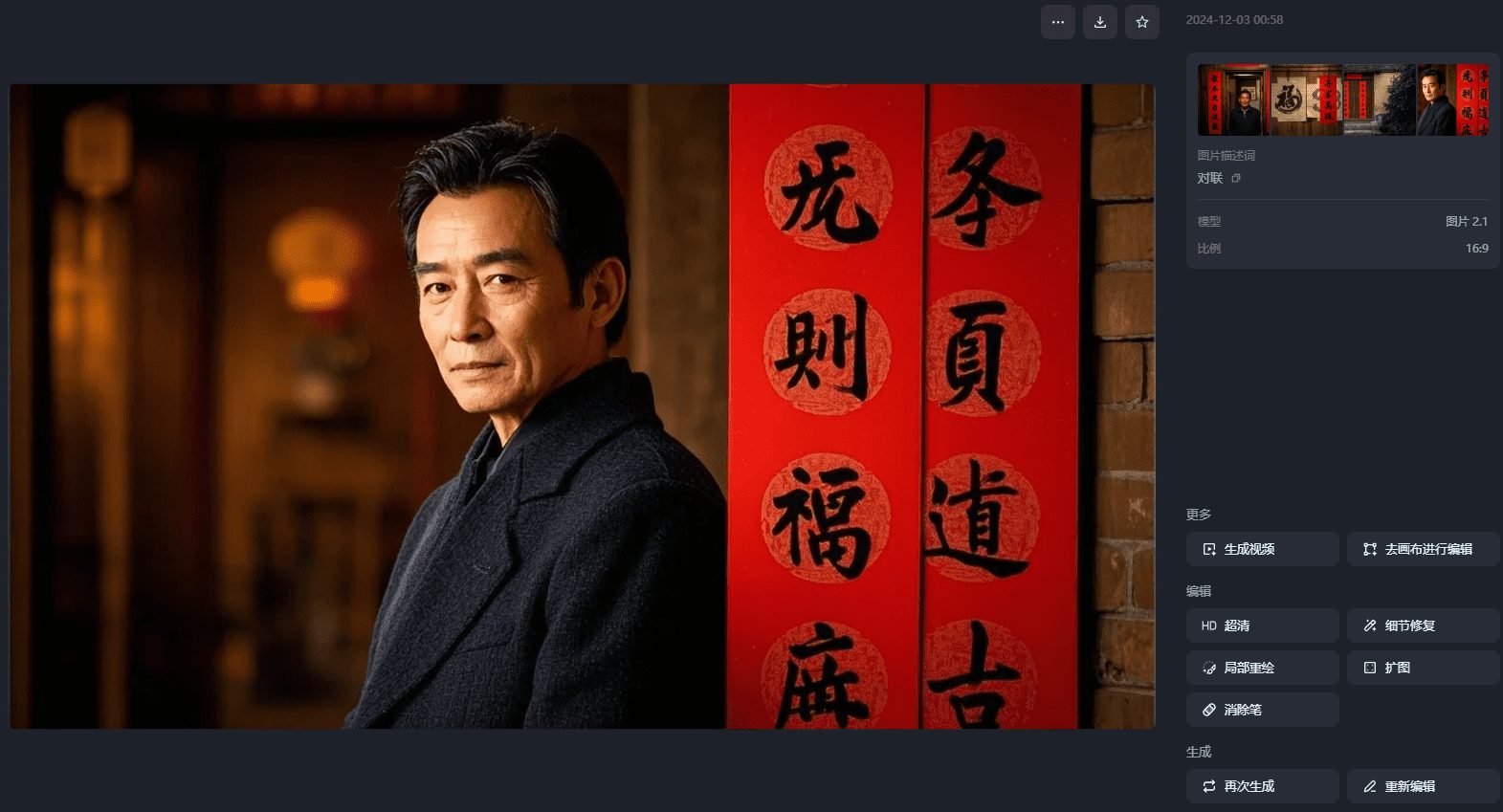
Conclusion: It is difficult to generate long texts without emphasizing the generated text, and generating only a single Chinese character does not represent competence.
Stage 3 Trial: Raw Growth Texts
The first one: a couplet, the first line: You are good, I am good, everyone is good, the second line: Everyone is good.
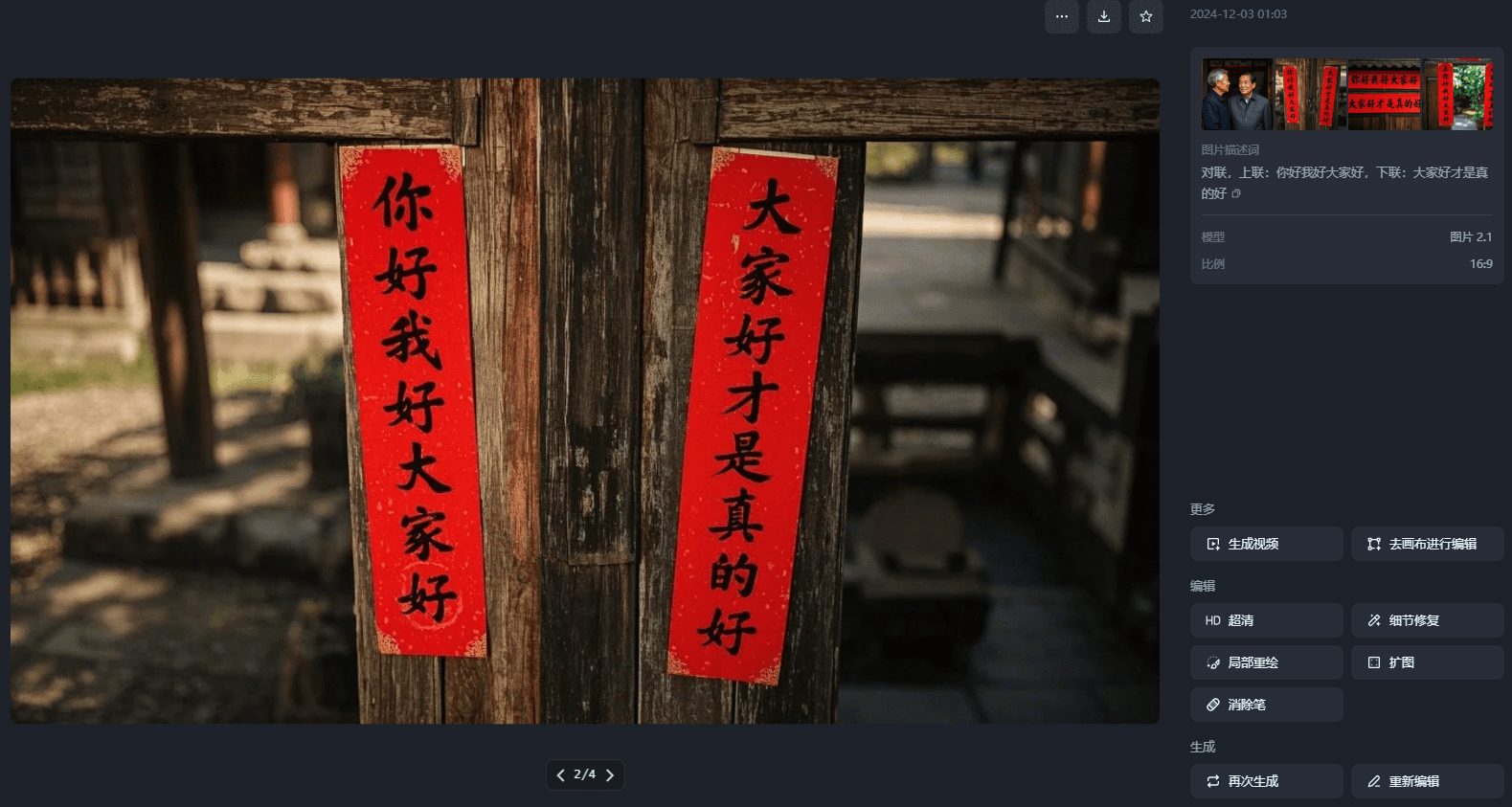
Second: writing long texts
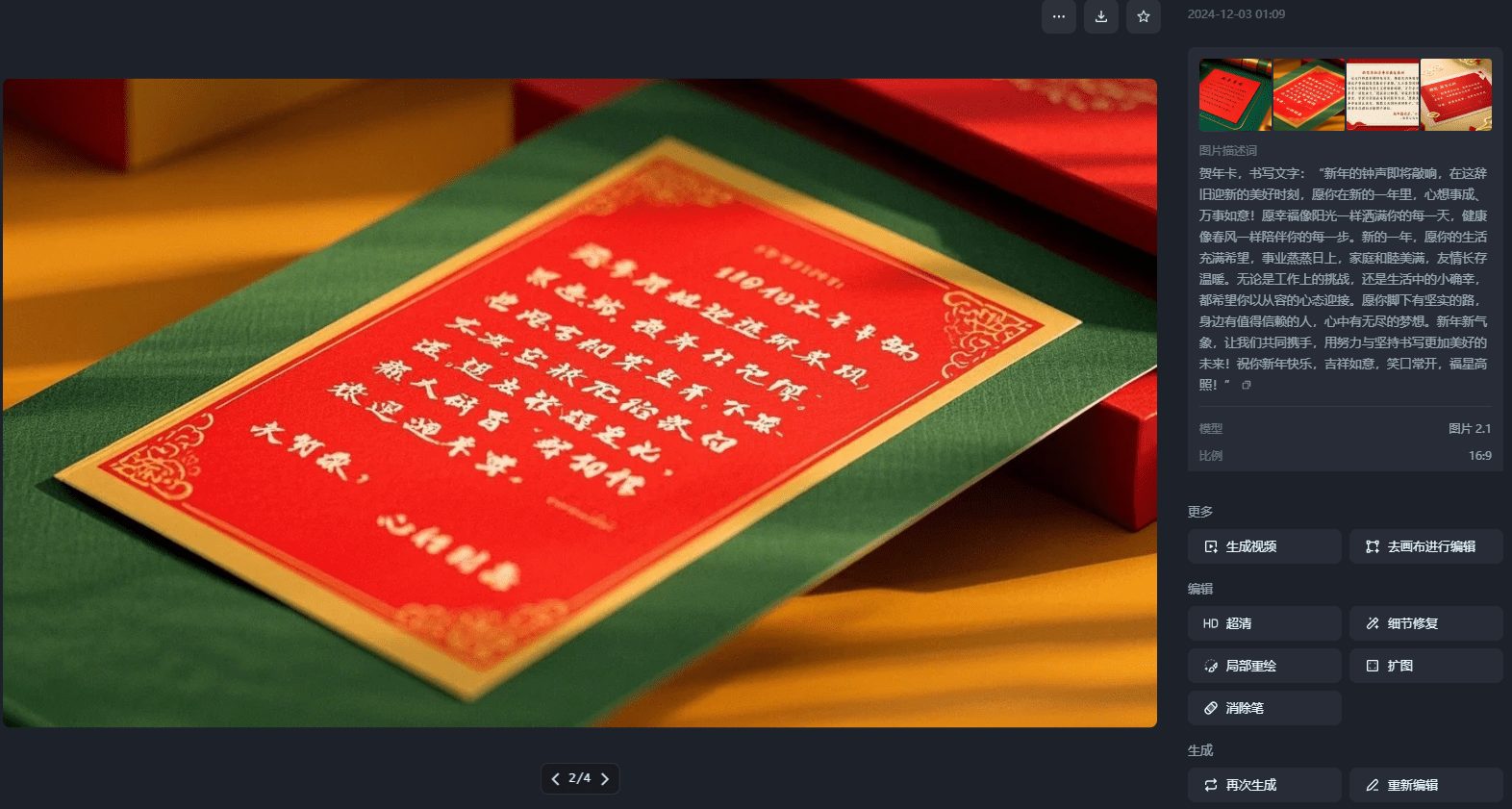
Unable to handle long text
Third: Shorten the text and add a mix of Chinese and English. (Emoticons are not allowed, would have liked to test it...)
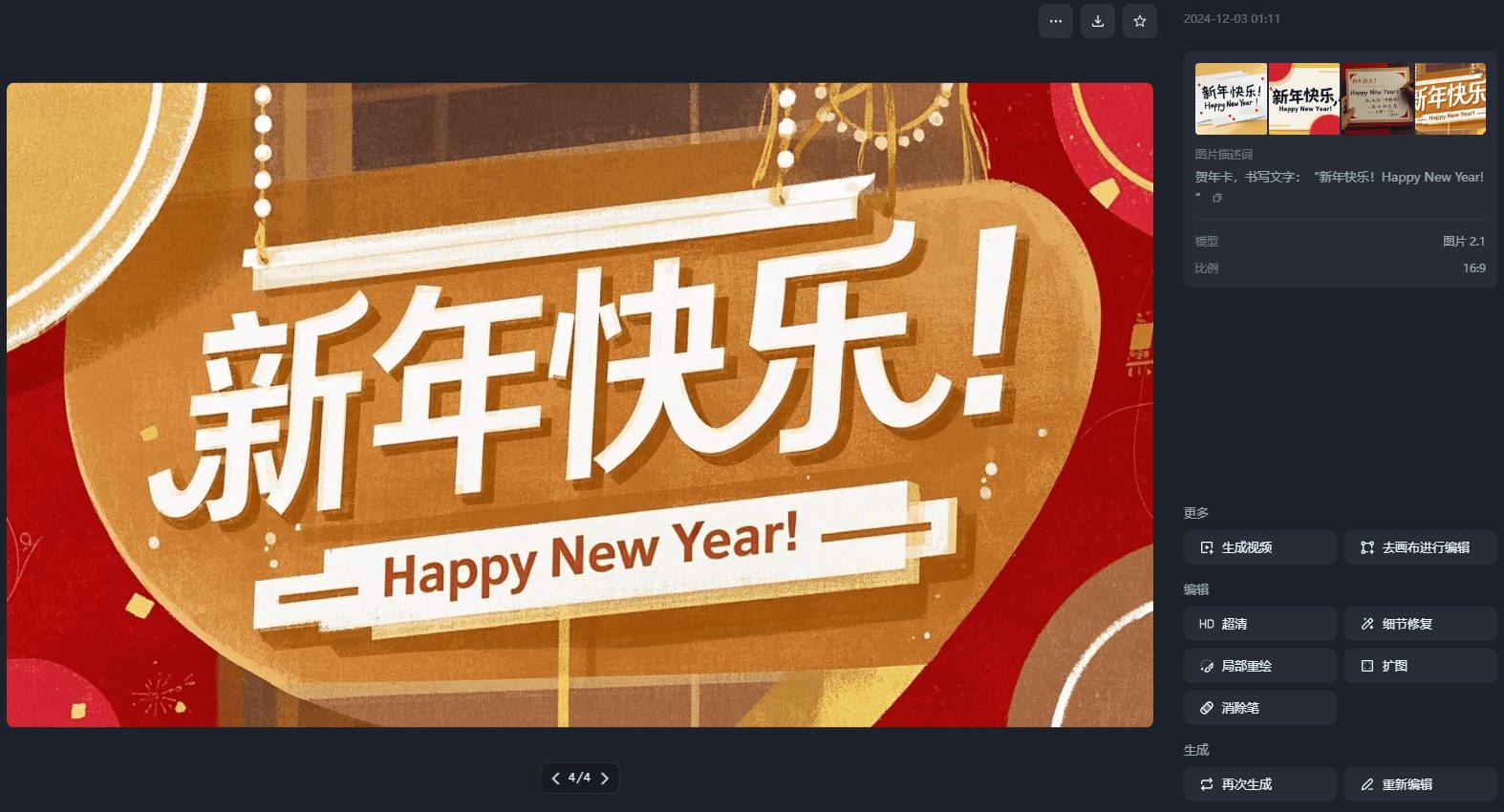
Supplement:
1. Try to generate a poster with a simple structure, so that it is easy to add or subtract elements at a later stage.
2. As long as the structure of the main picture is satisfactory, you can adjust the elements later.
3. After the image is edited on the canvas, it can be repaired and enlarged using "Detail Repair" and "Ultra HD".
4. Try not to produce long texts.
5. In the process of testing found that do not need to write too complex cue words, let the model free play a few times more draw cards can get a good picture.
© Copyright notes
Article copyright AI Sharing Circle All, please do not reproduce without permission.
Related articles

No comments...



